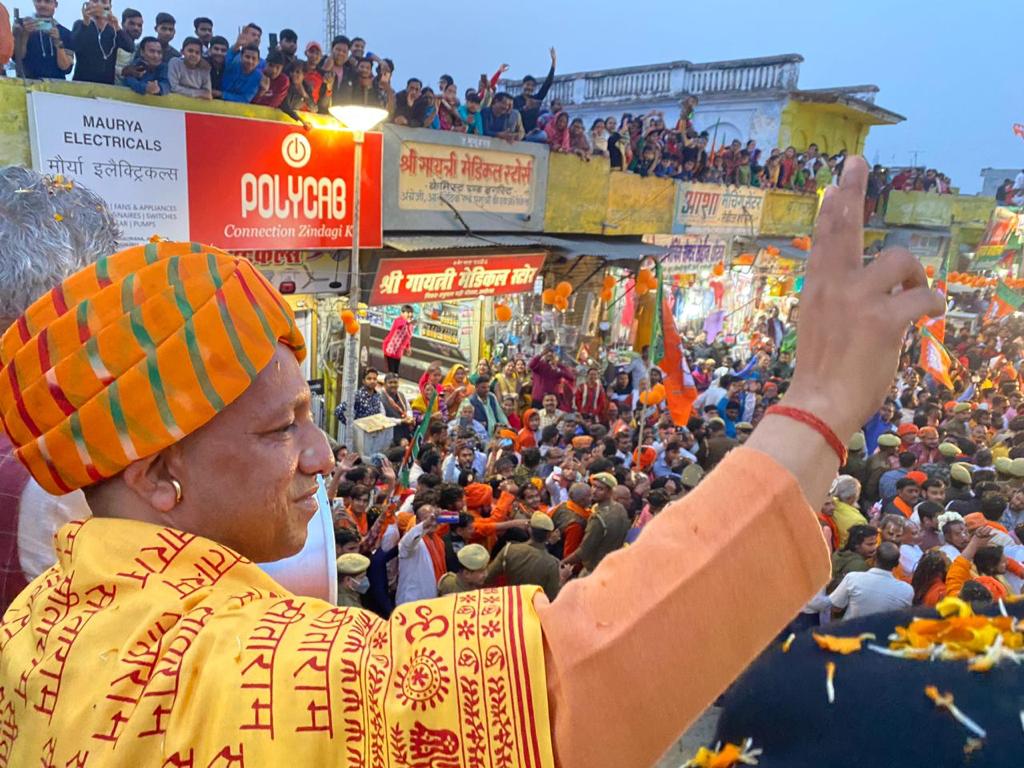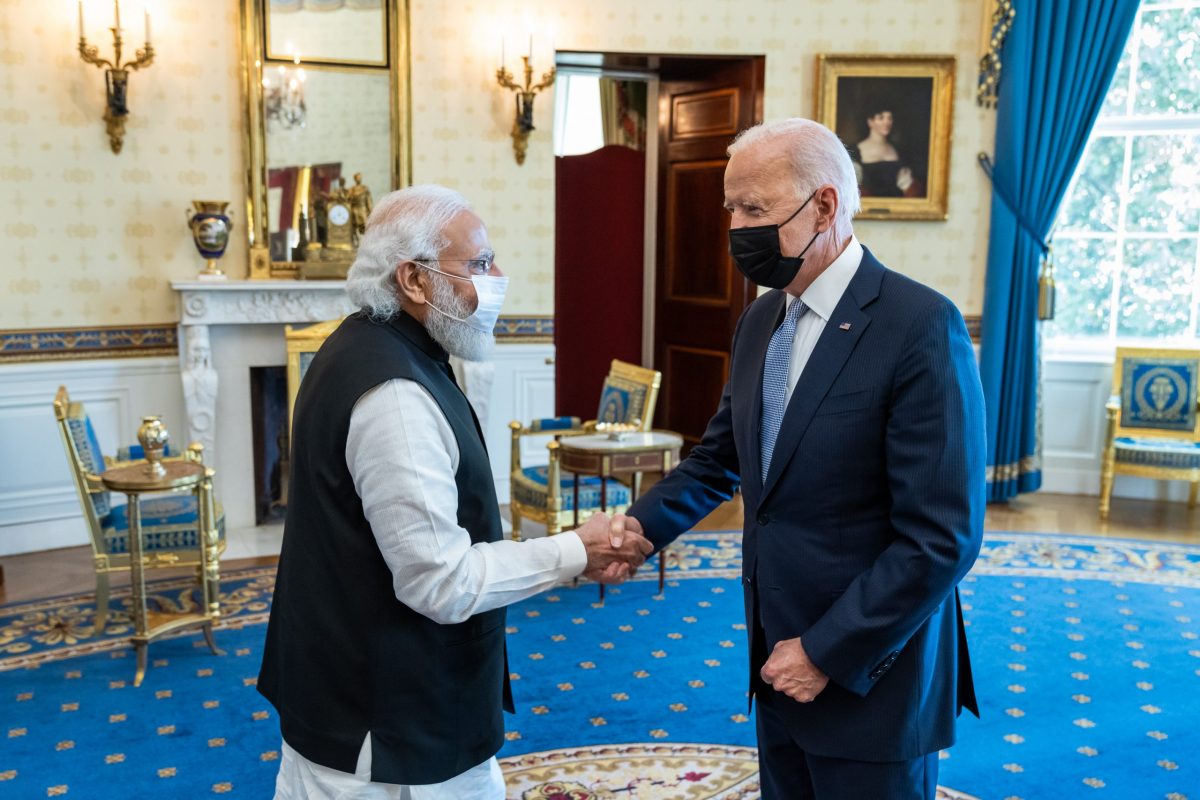Yesterday’s election results in five states can be described in many ways. But going beyond who won and who lost and how the history was created in Uttar Pradesh and Uttarakhand by an incumbent government getting renewed mandate and the way Punjab opted for a party that has only run so far a city-state (not a full-fledged state in the real sense of the term), I will concentrate on “what leads to electoral success”.
In fact, if one would have gone by our mainstream media, so-called liberal commentators, usual academic experts and activists in the social media, the BJP was bound to lose in all the four states it governed – Uttar Pradesh, Uttarakhand, Manipur and Goa.
Why? Because, and here I am summing up their points, Prime Minister Narendra Modi has lost all his charm and aura because of his atrocious way of handling the farmers’ agitation, Covid-19, inflation and rising unemployment.
They said that “secular” voters would no longer approve of the religious fundamentalism of the BJP, whose concrete manifestation was Uttar Pradesh Chief Minister Yogi Adityanath, who relied more on bulldozer than on compassion. They also pointed out how Uttar Pradesh mismanaged the health system during the days of the worst Corona attacks; it was so pathetic that dead bodies were floating in the Ganga river.
Of course, each of the above narratives can be contested on the basis of facts and figures. But I am not going into that. I, on the other hand, will concede that their narratives did create a perception, and perception matters a lot in politics, in such a manner that I saw even traditional and hardcore BJP supporters conceding that “good days “ of Modi and BJP were over. And this perception was built up in a planned manner that had three distinct or principal features.
One, they created a “halo” around a party or candidate. For instance, look at the way Akhilesh Yadav was projected as the leader of the “young” and the “development”. And after he made an alliance with Jayant Singh Chaudhary, the Jat leader from the farmers’ agitation-hit Western Uttar Pradesh, Akhilesh was described to be simply unbeatable.
The perception – makers now started saying that Akhilesh was not only drawing a much bigger crowd than even Modi but also attracted supporters who were genuine, enthusiastic and energetic. In contrast, Modi’s crowd, so we were told, were essentially a docile “paid” crowd and came from Gujarat and other states.

The second distinct feature of this strategy was to treat the election as a referendum on the achievements and failures of not only the incumbent state governments but of the Central government. So during most of the electioneering, campaigns centered on what Modi has done over the past seven and half years in Delhi.
They even talked of increased prices of petrol and gas,or for that matter unemployment, not realizing that in the event of their victories they, as Chief Ministers, could not have given relief on these fronts. In the process, efforts were more on making the electioneering a “Modi-hatao” campaign rather than using it as an earnest plea for a change of the state government.
The third, and the most important, feature of the strategy of these perception-makers or sellers was their faith in the “ever-relevant” dictum that winning elections in a state like Uttar Pradesh depended on caste or religious calculations rather than on any administrative or development agenda. If one heard and read the strategies and analyses, victory depends on how many castes are with you on the one hand and how many Muslims on the other.
The underlying assumption was that people belonging to a particular caste and religion (Islam) were all monolithic blocks and would vote for parties irrespective of what they said and did.
However, all these three features have been made irrelevant by Modi once again. The Prime Minister and his party are winning elections repeatedly essentially because they have worked hard to ensure that the conventional barometers to study elections have outlived their utilities. Modi has proved once again the limitations of the often lauded identity politics of caste, creed and region.

The latest round of elections has proved beyond any shadow of a doubt that people have not voted on caste lines. And, it is a healthy development. Indian democracy will be much stronger if one votes as an Indian, not as a member of a particular caste or religion. Unfortunately the dominant sections within the Indian polity, and this includes the intelligentsia, glorify identity politics.
For instance, if Yadavs, Muslims and Dalits vote as a block, they laud the phenomenon as consolidation for their respective democratic rights. If somebody opposes this trend, he or she is branded as communal.
In that sense, Modi is proving that elections can be won above caste and communal considerations. Modi has never highlighted the fact that he belongs to the OBC. In fact, our electoral pundits do not realize that going by their own theory, Modi is perhaps the most successful OBC politician in independent India’s history by becoming the Prime Minister of the country. But Modi has never exploited this factor. And rightly so.
All told, it is absurd that caste should continue to be given such importance in Indian elections. Suppose a Yadav or Jatav becomes a Chief Minister. Our so-called pundits’ theory is that irrespective of what he or she does, power will always remain with her or him because of the ability at forging a caste combination. Had that been the case a Mayawati or an Akhilesh Yadav would never have been defeated or lost power in Uttar Pradesh. The same would have been the case with Lalu Yadav and his wife in Bihar.
Let us face the truth that if Modi ( and his party) is winning it is because of his promise of empowering or aspirational politics. He has appealed to the broad, a very broad spectrum of society. And those aspirations have nothing to do with religion, caste or any other identity.
Even the bitterest critics of Yogi Adityanath in UP will admit that he never discriminated on caste and communal considerations in his governance or welfare measures like building homes and roads and other developmental activities. In my considered opinion, if UP has chosen once again the BJP, it is because the welfare measures of the Modi government, including freebies that reach directly to the targets without middlemen, world-class roads that have been built, Yogi’s strong steps in improving law and order that enable the girls and women to move out of their homes in the late afternoons, and the state government’s great record in reducing the power-cuts; all these things were dreams when Akhilesh or Mayawati was the chief minister.

Just imagine if Modi had not built toilets in maximum homes with Yogi’s help and dedication (an example of double-engine) and if he had not built the digital infrastructure in the country to have more cell phones and phone-banking, what would have the situation in UP, which is larger and more populous than more than 150 countries of the world, in confronting the worst attacks of the Corona.
I find it a little odd that the Modi government has not highlighted these achievements the way it merited, but Indian people are wise enough to realize all this.
The point is that for their administrative or governance record, Modi, or for that matter Yogi, is able to nullify the systematic slanders coming from the opponents and sustained by the mainstream media dominated by the so-called Left and liberals. They are proving that they are not exactly “divisive figures” they are made out to be.
There is a corollary to the above point – the more you demonize a Modi or a Yogi, the more sympathy they draw from people at the ground level. Their support base cannot be judged strictly in terms of identity politics. Their base, if at all, can be identified vertically in terms of class, not of caste or creed or region. And in this class- divide, it is obvious that the poor, who are in much larger numbers, are with Modi and Yogi. And, unlike many of us, they do go to polling booths to acknowledge that.
I will end with a post I wrote on Facebook wall last evening. I wrote that the biggest lesson of this round of elections was that “MY( Modi and Yogi) is greater than MY( Muslims and Yadavs)”. And I am happy to add that a young friend named Mayank Gaur reacted to my post by coming out with a much better description of MY as “Mahila and Youth”.
Thank you, Mayank! Let us make it M2Y2
- Author and veteran journalist Prakash Nanda is Chairman of Editorial Board – EurAsian Times and has been commenting on politics, foreign policy on strategic affairs for nearly three decades. A former National Fellow of the Indian Council for Historical Research and recipient of the Seoul Peace Prize Scholarship, he is also a Distinguished Fellow at the Institute of Peace and Conflict Studies. CONTACT: prakash.nanda@hotmail.com
- Follow EurAsian Times on Google News




